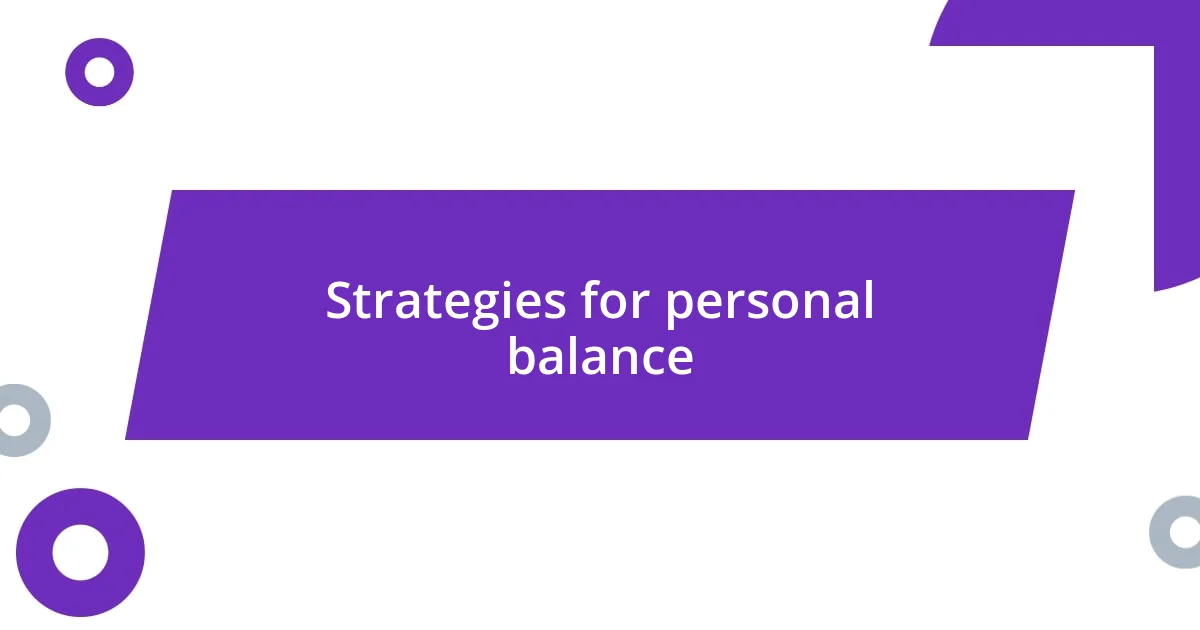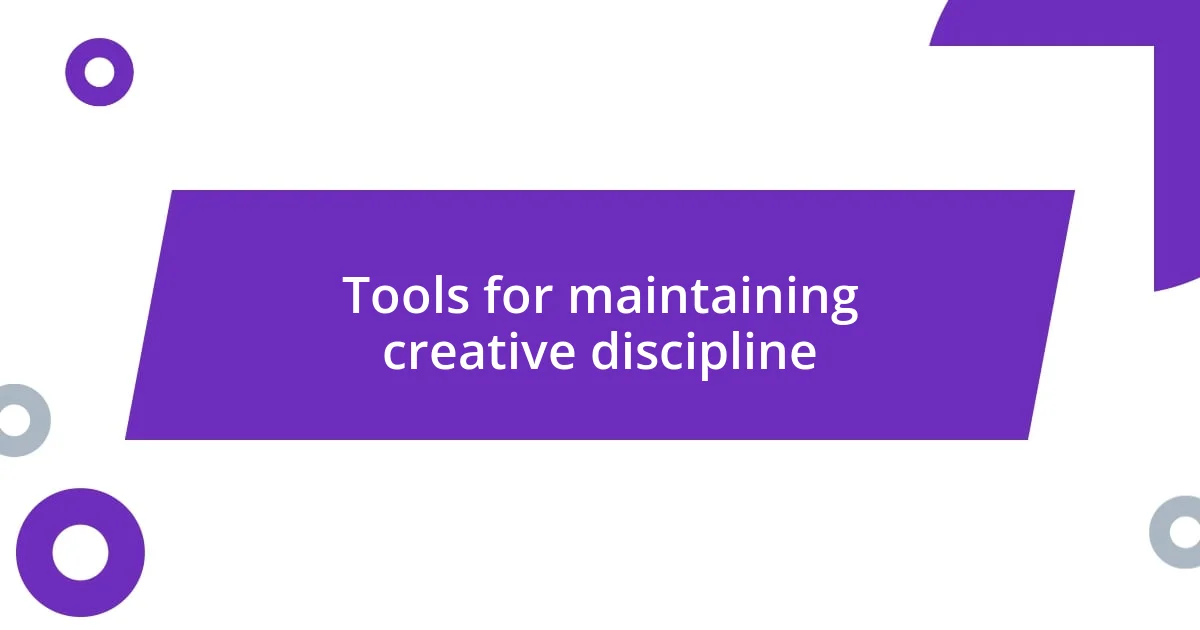Key takeaways:
- Creativity can flourish within boundaries; constraints often drive innovation and new perspectives rather than stifle them.
- Reflection on creative experiences and establishing a personal ‘rulebook’ enhance growth and provide structure to creative endeavors.
- Utilizing tools like digital project management apps and accountability partners helps maintain focus and discipline in the creative process.

Understanding creativity and rules
Creativity often feels like a wild river, flowing freely and unpredictably, while rules are like the banks that guide its movement. I remember a time in art class when I felt stifled by rigid guidelines. The challenge became clear: how could I express myself fully while respecting the necessary structure? This led me to ponder whether rules truly limit creativity or if they can actually serve as a platform to innovate.
Embracing rules can feel daunting, especially when you’re bursting with ideas. I found that adhering to specific frameworks, like color palettes or layout designs, often sparked unexpected inspiration rather than hindering it. Have you ever tried working within a constraint and found that it pushed you to think outside the box? It’s an exhilarating experience when you realize that limitations can ignite fresh perspectives.
Understanding the balance between creativity and rules is like mastering a dance. There’s a rhythm and flow where spontaneity meets structure. During a project, I once followed a strict timeline while allowing my creative ideas to evolve along the way. It was during those moments of following the plan that I discovered new layers to my creativity, reinforcing the idea that creativity and rules can coexist, enhancing each other rather than clashing.

Importance of boundaries in creativity
Boundaries play a crucial role in nurturing creativity. I vividly recall a project where I had to design a marketing campaign within strict branding guidelines. At first, I felt restricted, but I soon realized that these limitations encouraged me to explore innovative ways to communicate the brand’s message. It was like finding a new trail in the woods: the path might be defined, but it opened up a world of unexpected discoveries.
Consider these key points about how boundaries can enhance creativity:
- Clarification of Focus: Boundaries help clarify what can and cannot be done, allowing for more profound exploration within those parameters.
- Fostering Innovation: When faced with constraints, I often come up with ideas I wouldn’t have considered otherwise. The challenge pushes me to think differently.
- Building Confidence: Working within boundaries boosts my confidence in my creative abilities. Each successful project reinforces the belief that I can thrive even in limited contexts.
- Encouraging Collaboration: Boundaries can streamline communication and collaboration, ensuring that all creatives are aligned and focused on a common goal.
Embracing these boundaries has turned my creative process into a journey filled with both challenge and growth, reminding me that structure doesn’t quench enthusiasm; it fuels it.

Case studies of successful balancing
The fashion industry is a prime example of balancing creativity and rules, with designers often navigating strict guidelines while maintaining a unique voice. For instance, I remember reading about a renowned designer who was given a limited color palette for a collection. While this seemed constraining at first, the designer used those specific colors to experiment with textures and patterns in innovative ways, ultimately creating a stunningly cohesive collection. This experience opened my eyes to how rules can channel creativity rather than suppress it.
In the world of architecture, one case study stands out: a firm that focused on sustainable design. They followed strict building codes but used those guidelines as a canvas for their creativity. By integrating green roofs and natural materials, they transformed conventional spaces into inviting environments. I was genuinely inspired by how they turned regulatory constraints into opportunities for innovation, showing that respect for rules can lead to groundbreaking results.
Finally, consider a successful tech startup that developed an app with a strict user interface design. Initially, the team struggled with the rigidity of platform guidelines. However, they turned this challenge into a strength by focusing on user experience. The app launched to rave reviews, largely because the constraints forced them to prioritize functionality and ease of use. Reflecting on this, I realized that adhering to guidelines can sometimes be the key to truly captivating an audience.
| Industry | Case Study |
|---|---|
| Fashion | Designer who thrived within a limited color palette |
| Architecture | Firm integrating sustainable design within strict building codes |
| Tech | Startup prioritizing user experience under UI design guidelines |

Strategies for personal balance
One effective strategy I’ve found is scheduling dedicated creativity time. I established specific blocks in my week solely for brainstorming and experimentation. At first, it felt a bit strange to prioritize “play,” but I quickly noticed that these sessions invigorated my creative spirit, allowing me to approach my projects with fresh ideas and renewed energy. Have you ever carved out time just to think freely? When you do, it’s like giving your mind permission to wander without the constraints of deadlines or expectations.
Another approach I’ve embraced is the practice of reflection—after completing a project, I often take a moment to review what I learned from the process. This isn’t just a formality; it’s a chance for me to appreciate how boundaries shaped my journey. I remember a time I felt particularly frustrated with limitations during a campaign. But reflecting on the project, I realized that those same parameters had pushed me into creative territories I hadn’t initially considered. How often do we pause to acknowledge our growth? This simple act of reflection can transform your understanding of the creative process.
I also advocate for creating a personal ‘rulebook’. It might sound quirky, but I’ve jotted down principles that resonate with me, such as “embrace failure” or “seek minimalism.” This self-imposed structure acts as a guideline for my creative endeavors while allowing room for exploration. When I encounter a confusing project, I return to these rules and remember that creativity thrives within a flexible framework. The question you might ask is: how can a personal rulebook enhance my creativity? In my experience, it provides reassurance and direction, much like a compass during a wilderness hike.

Overcoming challenges in creative expressions
Creativity often comes with its own set of challenges, especially when you’re forced to think outside the box while still adhering to established norms. I remember a time when I was working on a marketing campaign that had very specific brand guidelines. Initially, I felt stifled, as if my ideas were trapped in a box. However, the moment I reframed those constraints as a creative challenge, everything changed. Instead of feeling limited, I explored how to blend traditional concepts with fresh, bold ideas, leading to a campaign that not only met guidelines but also resonated with the audience. Isn’t it fascinating how limitations can actually fuel your imagination?
There are moments when the fear of breaking the rules can be paralyzing. I’ve faced scenarios where I hesitated to pitch a revolutionary concept because I worried it would clash with traditional practices. But in a brainstorming session, a colleague’s encouragement to “just throw spaghetti at the wall and see what sticks” helped me break through that barrier. That simple phrase resonated deeply; it reminded me that creativity is about exploration, not perfection. I left that meeting feeling liberated, realizing that overcoming fear is often the first step towards authentic creative expression. Have you experienced a similar moment of clarity?
Another challenge I’ve encountered is the balance between passion projects and commercial work. Sometimes, I find myself pouring my heart into a personal piece only to feel overwhelmed when it comes time to share it with the world. During one such experience, I struggled with vulnerability, fearing that my personal style might not align with mainstream tastes. However, I found solace in sharing my journey with peers who appreciated my unique vision. Their feedback helped me understand that authenticity is vital in creativity, and it reminded me that breaking rules can lead to genuine and gratifying connections. How do you navigate your own creative fears while striving for authenticity?

Tools for maintaining creative discipline
One useful tool I’ve discovered for maintaining creative discipline is a digital project management app. When I started using one, I found that breaking down my creative projects into smaller, manageable tasks not only kept me organized but also provided a sense of accomplishment as I ticked items off my list. Imagine the satisfaction of watching your progress visualized on a timeline; it keeps the momentum going, despite any creative roadblocks I might face.
I also invest in a quality notebook dedicated solely to my creative thoughts. There’s something wonderfully tangible about jotting down random ideas, sketches, or even stream-of-consciousness writing. It’s like having a personal sanctuary where rules don’t apply, and I can revisit those ideas later with a fresh perspective. Have you ever stumbled upon a page in your notebook that ignited a spark? I know I have—it’s a delightful reminder of the potential that exists in even the briefest of thoughts.
In addition to these tools, I’ve found accountability partners invaluable. Partnering with someone who understands my creative goals provides a gentle nudge when my motivation wanes. We check in regularly, sharing progress and challenges. There’s a certain energy in discussing my aspirations with someone else; it pushes me to stay focused and take my projects seriously. Have you ever felt the boost of camaraderie in your creative journey? Trust me, finding that support can make a world of difference in how disciplined I remain!














